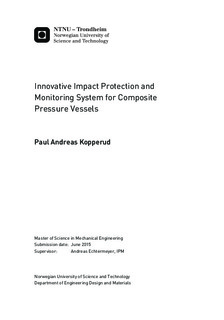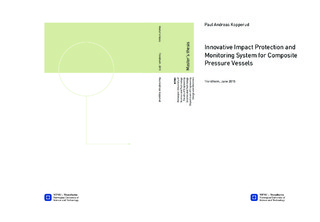| dc.description.abstract | Impact behavior and resistance of composite structures are difficult to predict. For composite pressure vessels, where failure can be fatal, impact protection and detection is particularly important. This thesis aims to render high pressure composite vessels safer to use with regards to impact. Three main objectives were identified; Firstly, finding an effective impact protection method and material. Secondly, developing a low cost impact detection system. Lastly, find an approach to estimate the severity of damage in an impacted composite vessel. Adopting an experimental approach, each objective was investigated separately before combining them into a final prototype.
For the protective material, a material-search was conducted where cross-linked Polyvinyl Chloride foam (X-PVC), Polyethylene terephthalate foam (PET) and Low-density polyethylene foam (LDPE) were chosen and impact tested. X-PVC was identified as the most promising impact absorption material for protection of composite pressure vessels.
The low cost solution for impact detection was developed by taking advantage of the elastic wave induced in the composite material during an impact. Instrumenting the pressure vessel with simple piezo elements and an accelerometer together with a low cost processor, allowed detection of the elastic waves and the origin of the impacts on a composite tube.
Residual strain in the composite after impact was tested in an attempt to assess impact damage. Optical fiber strain measurements were conducted to register the residual strain after impact. Elevated strains were found and correlation between impact damage and the residual strain was identified.
As a proof of concept, a final prototype was built, satisfying the main objectives; The protective material was able to fully protect the impacted pipe as no visible damage was detected. The low cost piezo element was able to detect the imposed impacts and residual strain measurement in the composite indicated a low level of damage as well as predicting the location of damage. | |

